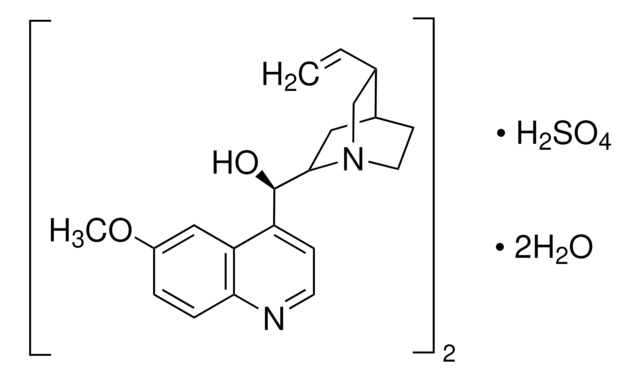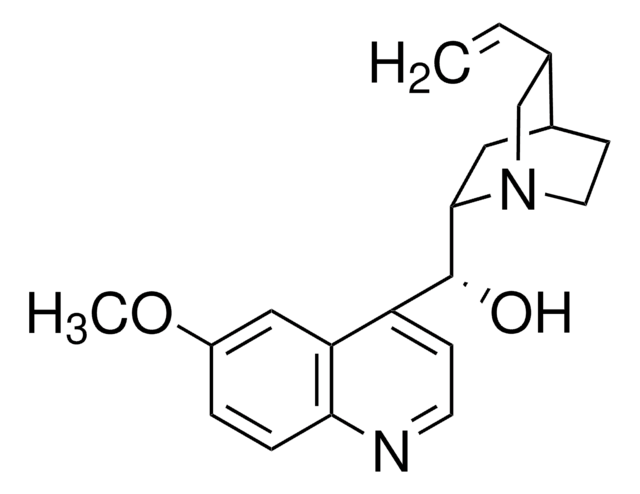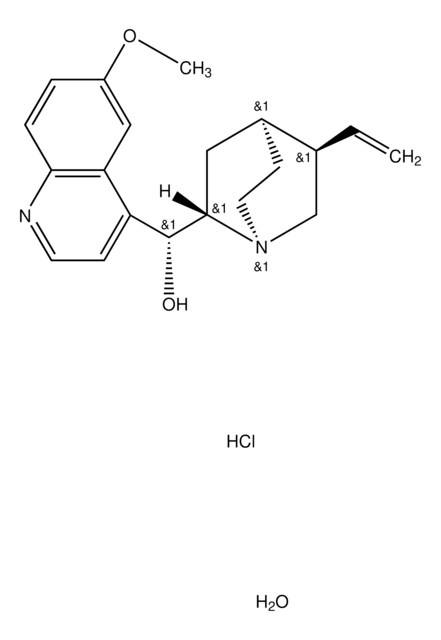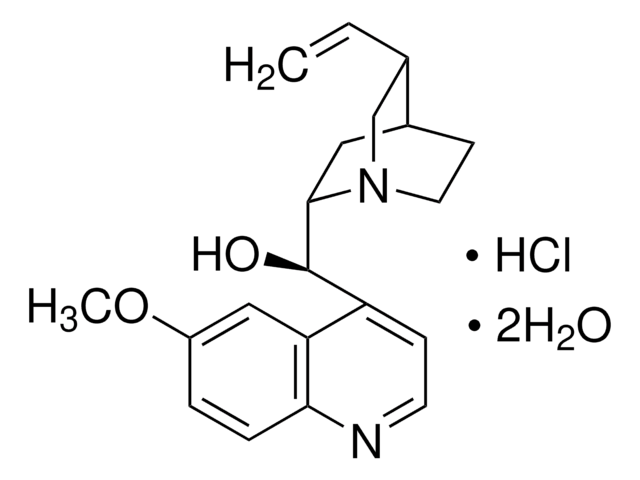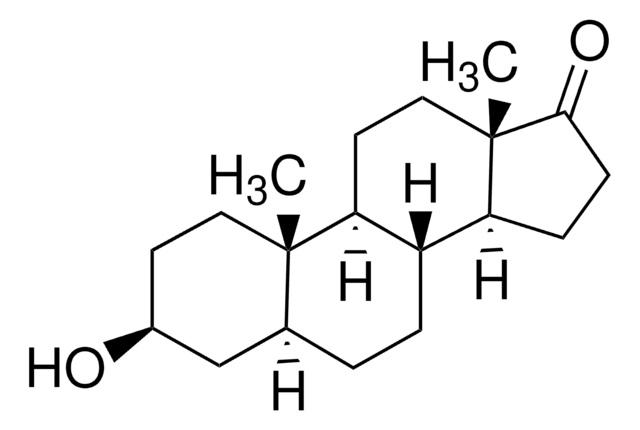22640
Quinine hemisulfate salt monohydrate
BioReagent, suitable for fluorescence, 99.0-101.0%
Synonym(s):
Quinine sulfate (2:1) (salt) dihydrate
About This Item
Recommended Products
product line
BioReagent
Quality Level
assay
99.0-101.0%
mp
~225 °C (dec.) (lit.)
fluorescence
λex 347 nm; λem 448 nm in 0.5 M sulfuric acid
suitability
suitable for fluorescence
antibiotic activity spectrum
parasites
mode of action
enzyme | inhibits
SMILES string
O.O.OS(O)(=O)=O.COc1ccc2nccc([C@@H](O)C3CC4CCN3C[C@@H]4C=C)c2c1.COc5ccc6nccc([C@@H](O)C7CC8CCN7C[C@@H]8C=C)c6c5
InChI
1S/2C20H24N2O2.H2O4S.2H2O/c2*1-3-13-12-22-9-7-14(13)10-19(22)20(23)16-6-8-21-18-5-4-15(24-2)11-17(16)18;1-5(2,3)4;;/h2*3-6,8,11,13-14,19-20,23H,1,7,9-10,12H2,2H3;(H2,1,2,3,4);2*1H2/t2*13-,14-,19-,20+;;;/m00.../s1
InChI key
ZHNFLHYOFXQIOW-LPYZJUEESA-N
Looking for similar products? Visit Product Comparison Guide
General description
Application
Biochem/physiol Actions
signalword
Warning
hcodes
Hazard Classifications
Eye Irrit. 2 - Skin Irrit. 2 - STOT SE 3
target_organs
Respiratory system
Storage Class
11 - Combustible Solids
wgk_germany
WGK 3
flash_point_f
Not applicable
flash_point_c
Not applicable
ppe
dust mask type N95 (US), Eyeshields, Gloves
Choose from one of the most recent versions:
Already Own This Product?
Find documentation for the products that you have recently purchased in the Document Library.
Customers Also Viewed
Our team of scientists has experience in all areas of research including Life Science, Material Science, Chemical Synthesis, Chromatography, Analytical and many others.
Contact Technical Service